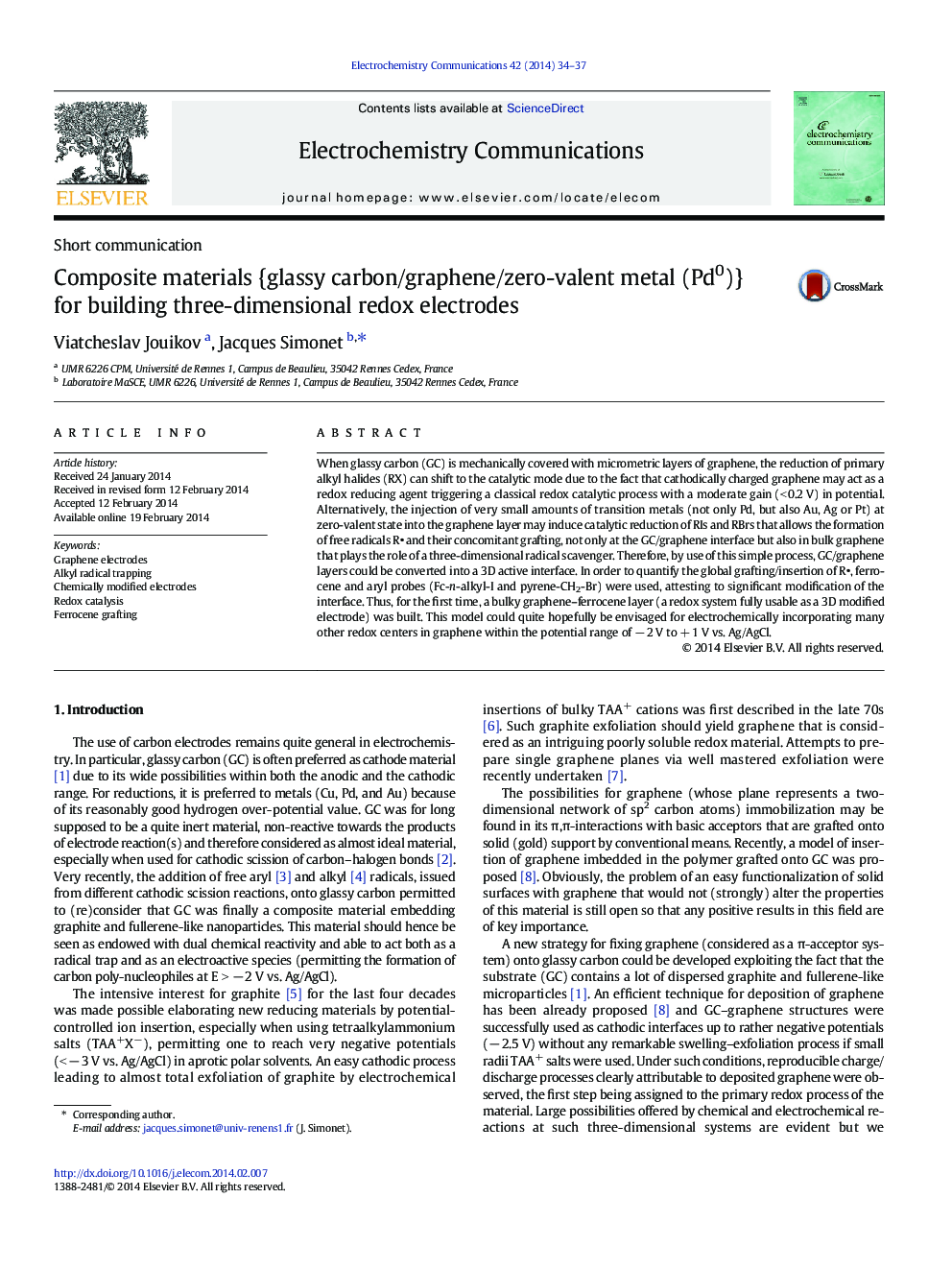| Article ID | Journal | Published Year | Pages | File Type |
|---|---|---|---|---|
| 179083 | Electrochemistry Communications | 2014 | 4 Pages |
•Building of a composite {glassy carbon−graphene−zero-valent metal} material•Modified graphene as a source of catalysis•In situ addition of free radicals onto graphene•Ferrocene and pyrene three-dimensional carbon redox electrodes
When glassy carbon (GC) is mechanically covered with micrometric layers of graphene, the reduction of primary alkyl halides (RX) can shift to the catalytic mode due to the fact that cathodically charged graphene may act as a redox reducing agent triggering a classical redox catalytic process with a moderate gain (< 0.2 V) in potential. Alternatively, the injection of very small amounts of transition metals (not only Pd, but also Au, Ag or Pt) at zero-valent state into the graphene layer may induce catalytic reduction of RIs and RBrs that allows the formation of free radicals R and their concomitant grafting, not only at the GC/graphene interface but also in bulk graphene that plays the role of a three-dimensional radical scavenger. Therefore, by use of this simple process, GC/graphene layers could be converted into a 3D active interface. In order to quantify the global grafting/insertion of R, ferrocene and aryl probes (Fc-n-alkyl-I and pyrene-CH2-Br) were used, attesting to significant modification of the interface. Thus, for the first time, a bulky graphene–ferrocene layer (a redox system fully usable as a 3D modified electrode) was built. This model could quite hopefully be envisaged for electrochemically incorporating many other redox centers in graphene within the potential range of − 2 V to + 1 V vs. Ag/AgCl.
Graphical abstractFigure optionsDownload full-size imageDownload as PowerPoint slide
